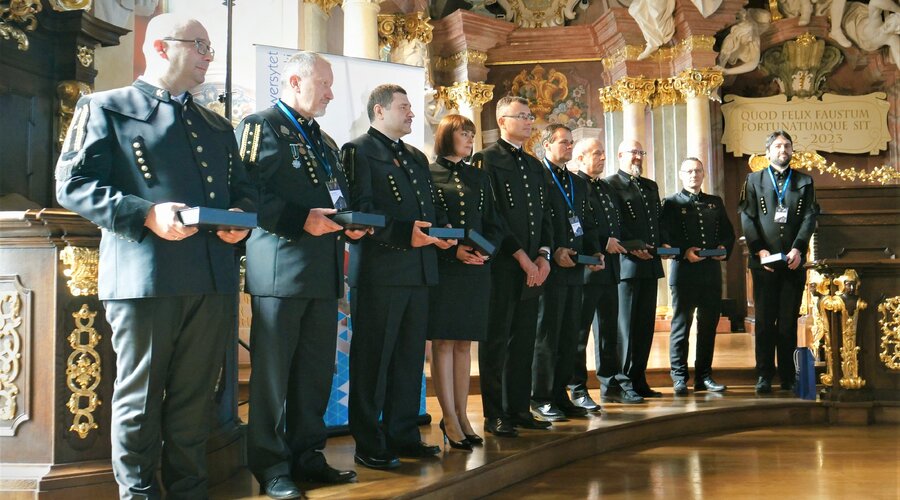On the 65th anniversary of the discovery of copper deposits, awards for KGHM geologists
“For Merit to the KGHM” award given to 11 KGHM geologists - the ceremony took place at the University of Wrocław during a conference to mark the 65th anniversary of the discovery of copper ore deposits in the Pre-Sudetic Monocline.
KGHM geologists were awarded in recognition of their work at the KGHM. This is one of the ways in which the company is celebrating an anniversary of the discovery of a deposit near Sieroszowice by a team led by Jan Wyżykowski. The scientific conference at the University of Wroclaw brought together representatives of science, organizations, and institutions linked to the mining industry.
A little science
The specialists talked at the University of Wrocław about the past and future of the KGHM, also taking into account the work of geologists who, thanks to their passion and determination, discovered in Lower Silesia the largest deposits of copper ore in the world. The event that took place 65 years ago not only changed the region and led to the creation of the Copper Belt, but also had an impact on the entire Polish economy. Today, the KGHM is the global leader in the mining industry.
A little history
On March 23, 1957, geologist Jan Wyżykowski brought to the National Geological Institute (NGI) four cores extracted during the drilling he conducted near Sieroszowice. Tests confirmed that the samples contained chalcosine, a basic copper sulfide. This marked the start of the history of the KGHM, the world’s leading producer of copper, silver, and gold.
The four cores extracted by Jan Wyżykowski’s team proved to be worth their weight in gold. After the discovery, construction on the first mine, Lubin Mining Facility, began. After a few years, as much as 14,000 tonnes of ore per day were mined there. In comparison, currently the average weight of wet ore mined is more than 30 million tonnes per year.
Some interesting facts
All KGHM’s branches together produce an average of 590,000 tonnes of electrolytic copper and about 1,200 tons of silver per year. Just 5 kg of silver is enough to make 1,000 rings.
1957 was also the year when the manufacture the iconic car Syrenka began in Poland. It is a shame that no one thought about electric cars back then. A regular electric car contains almost 4 times more copper than a car with an internal combustion engine. We can only image that one electric Syrenka would now require 83 kg of copper.
The dreams of Jan Wyżykowski’s team probably did not go that far, but the KGHM currently operates on four continents. The company’s main copper reserves are in Poland, in the Copper Belt. The company is operating with the prospect of several more decades of production. It is estimated that the area of the Głogów Głęboki-Przemysłowy deposit contains 265 million tonnes of industrial copper ore. In addition, the KGHM is already exploring the Bytom Odrzański and Kulów-Luboszyce concession areas in the Lubuskie Province. Experts conservatively estimate these deposits at around 11 million tonnes of copper.
Today, the KGHM is a global leader in copper and silver production. The KGHM Group employs more than 34,000 people. The company is investing in new technologies and innovative solutions. Last year, the Management Board of the KGHM adopted a Climate Policy that provides for a reduction of greenhouse gas emissions and achieving climate neutrality by 2050.
On the other hand, going back to history, in order to take advantage of the discovery of Jan Wyżykowski’s team, the “Lubin in construction” Mining facility was established in 1960 and then transformed into the Copper Mining and Smelting Combine in 1961. In 1991, the Combine was transformed into a state-owned company and 25 years ago (on July 10, 1997), the KGHM made a debut on the Warsaw Stock Exchange.
Finally, what could the Totolotek lottery have in common with copper? 65 years ago, the first draw in Poland was held in this once-popular game and a team of geologists discovered a copper deposit in the fields near Sieroszowice. The region then won a real lottery ticket, which was hidden deep underground.



